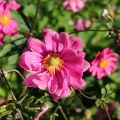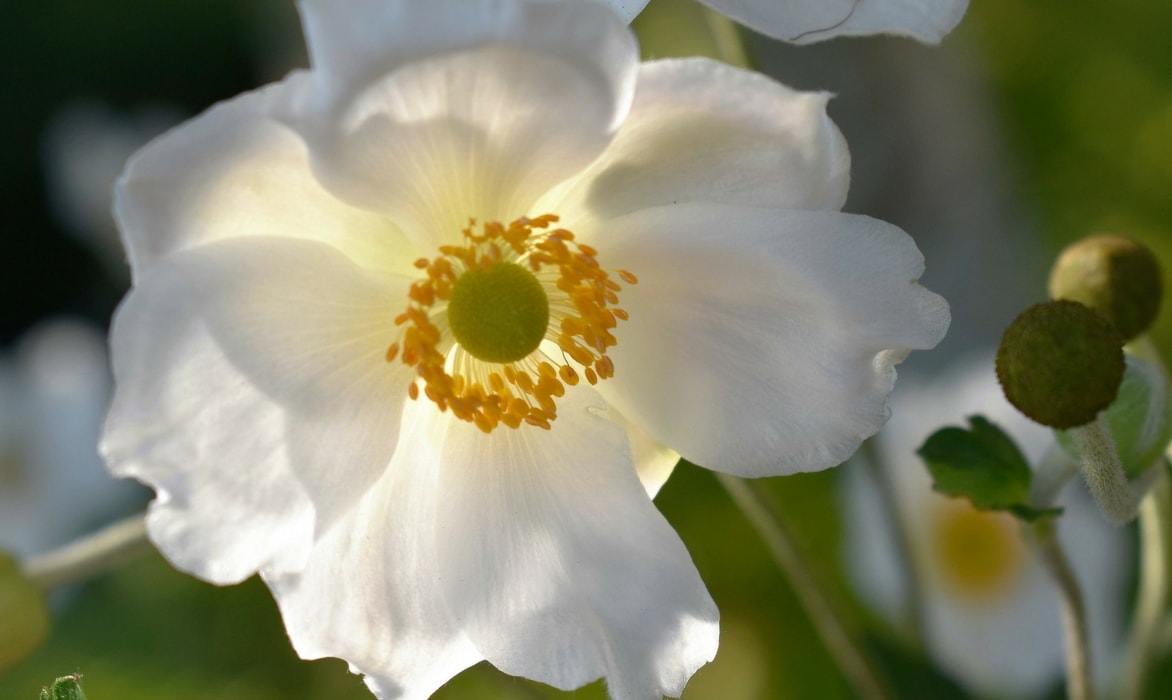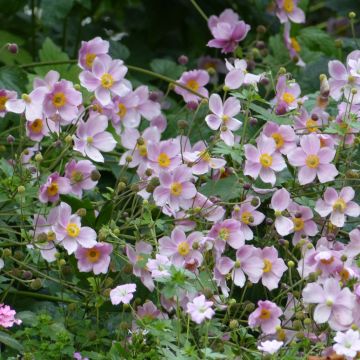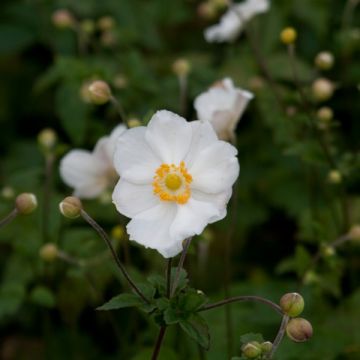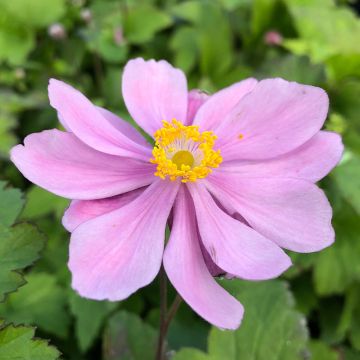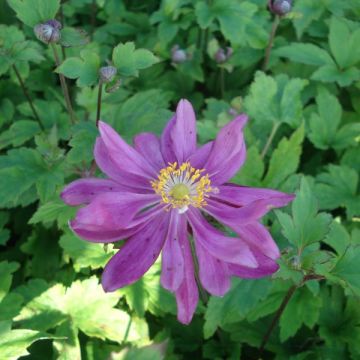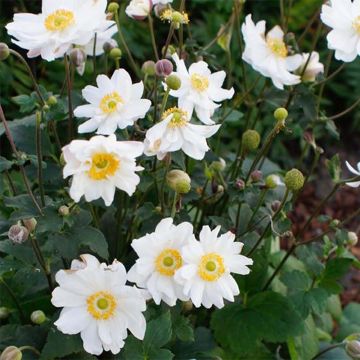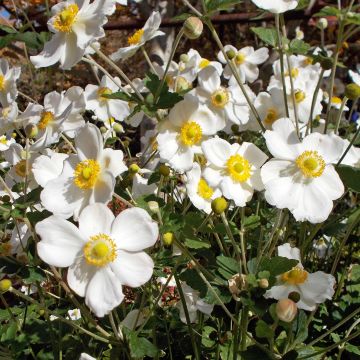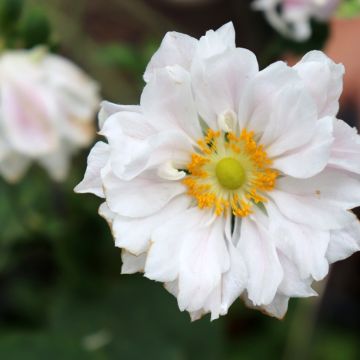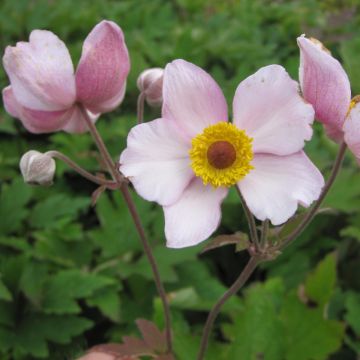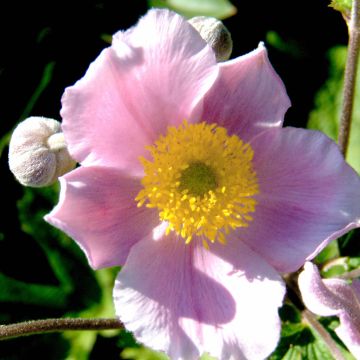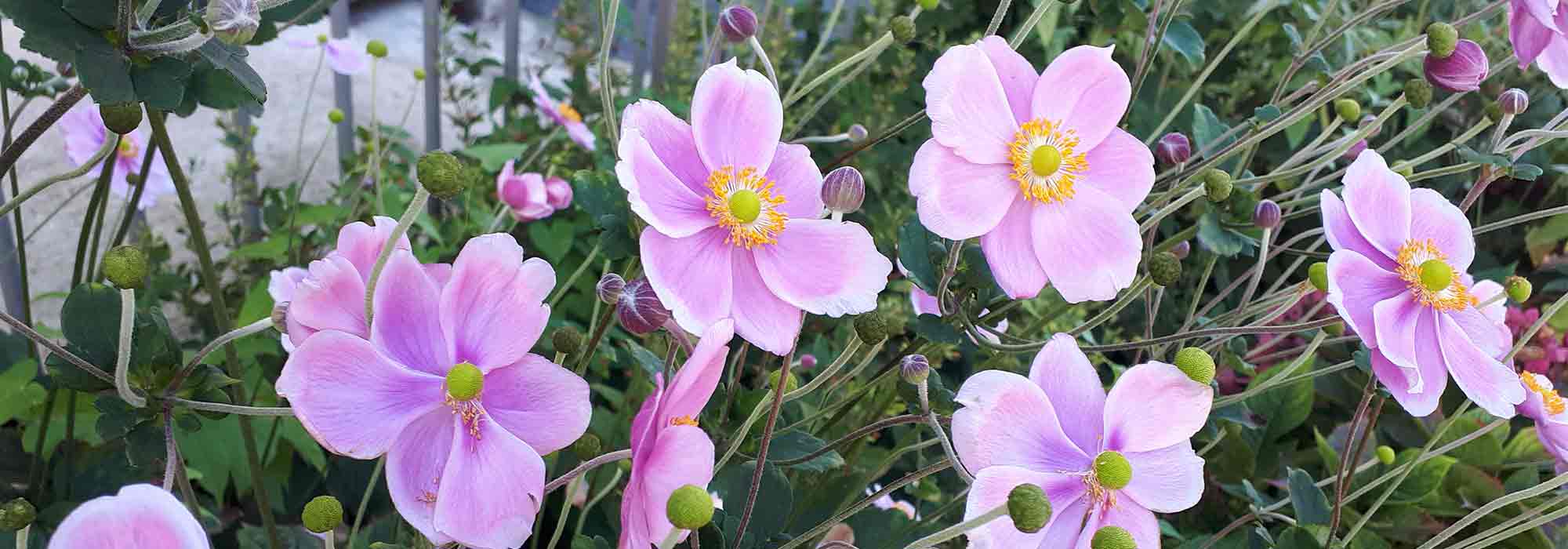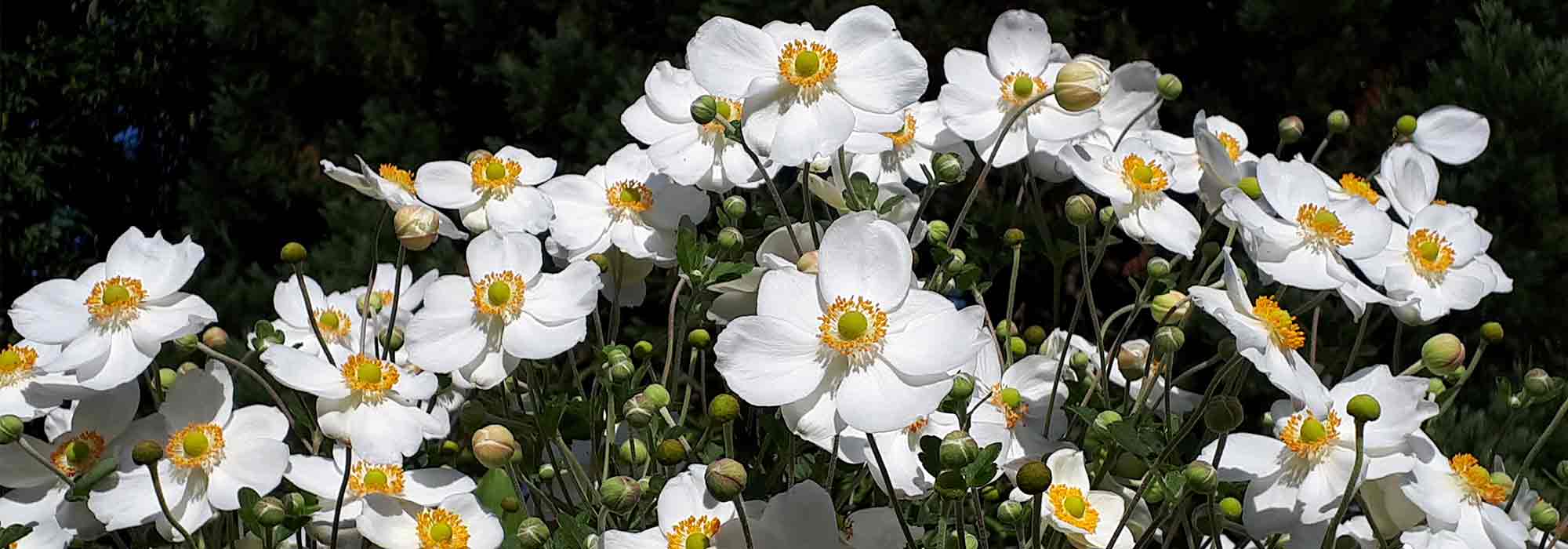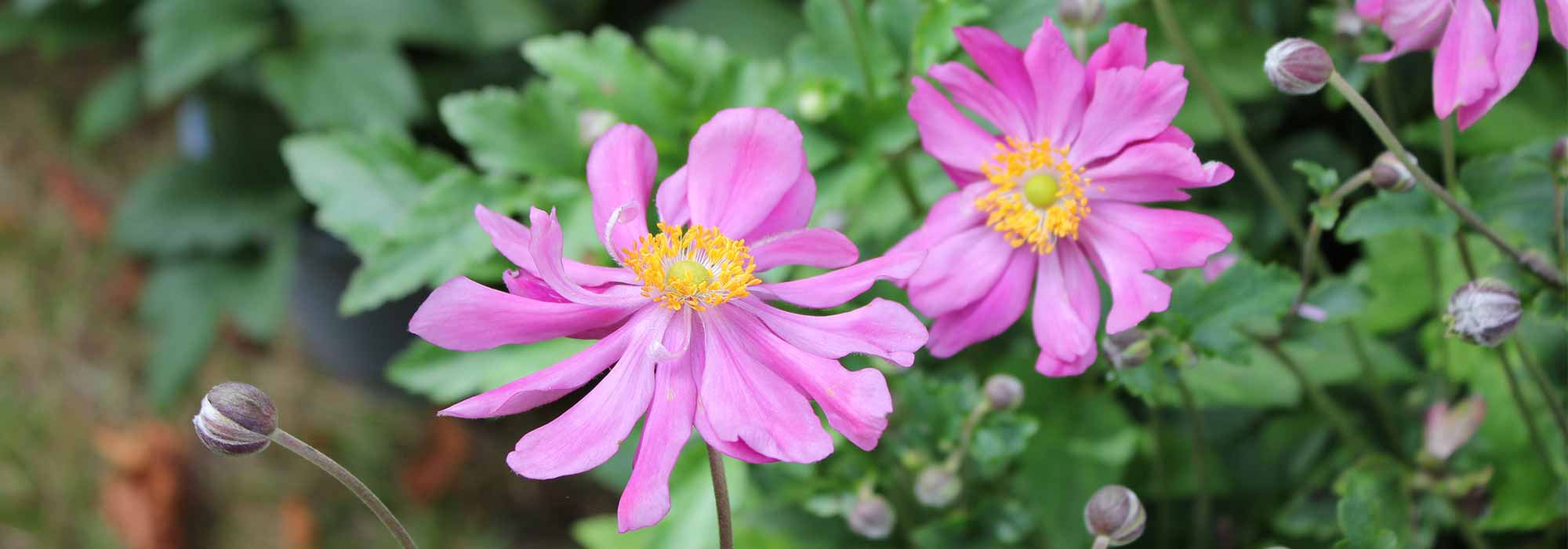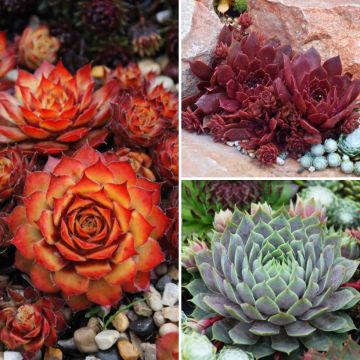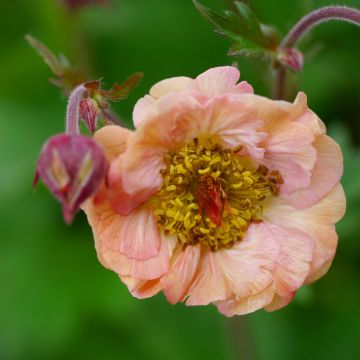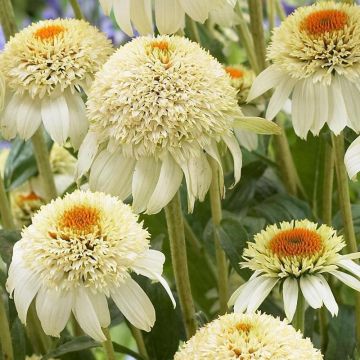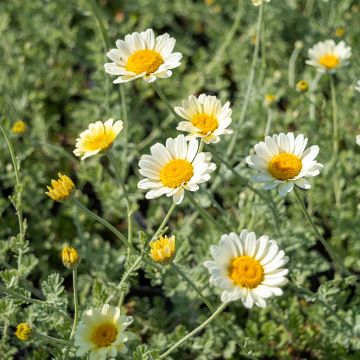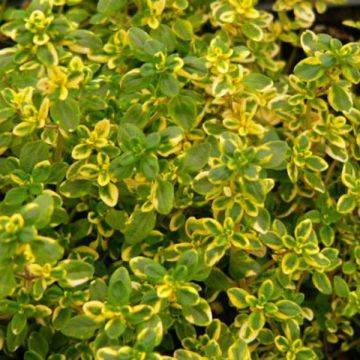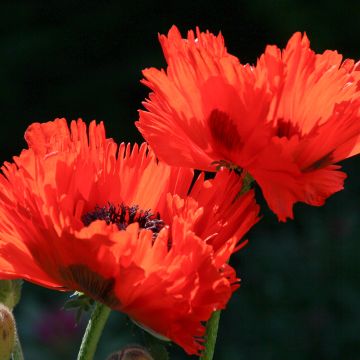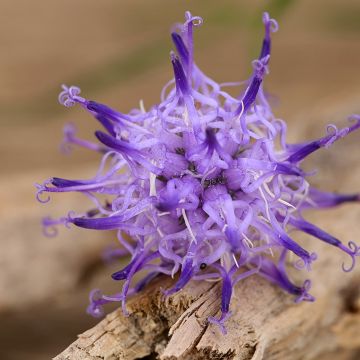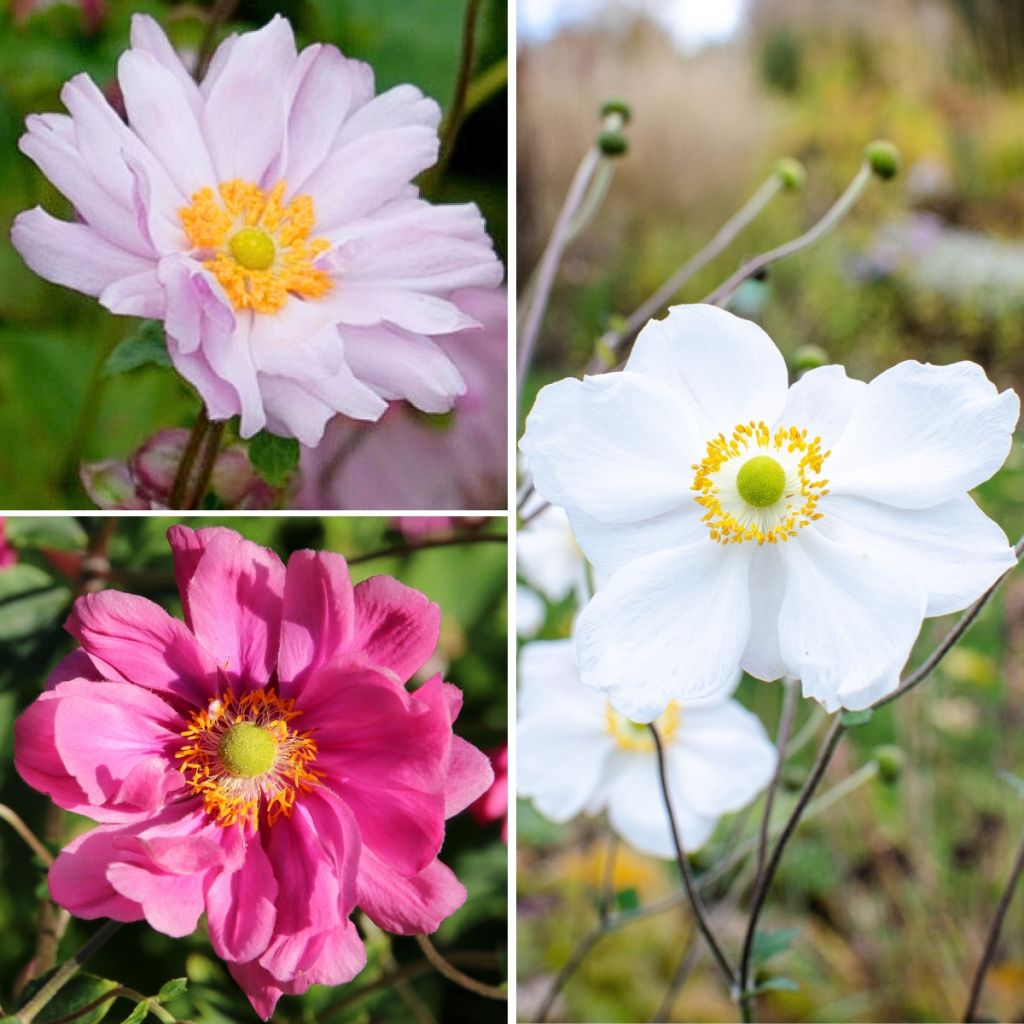

Double-flowered Japanese Anemone Collection
Double-flowered Japanese Anemone Collection
Anemone (x) hybrida Whirlwind, Mont Rose et Margarete
Japanese Anemone
Special offer!
Receive a €20 voucher for any order over €90 (excluding delivery costs, credit notes, and plastic-free options)!
1- Add your favorite plants to your cart.
2- Once you have reached €90, confirm your order (you can even choose the delivery date!).
3- As soon as your order is shipped, you will receive an email containing your voucher code, valid for 3 months (90 days).
Your voucher is unique and can only be used once, for any order with a minimum value of €20, excluding delivery costs.
Can be combined with other current offers, non-divisible and non-refundable.
Home or relay delivery (depending on size and destination)
Schedule delivery date,
and select date in basket
This plant carries a 12 months recovery warranty
More information
We guarantee the quality of our plants for a full growing cycle, and will replace at our expense any plant that fails to recover under normal climatic and planting conditions.
Would this plant suit my garden?
Set up your Plantfit profile →
Collection items (3 plants)
Description
The collection consists of:
- x 1 'Whirlwind' Anemone: an old variety, rather early, reaching up to 1.20 m (4ft) in height. Flowers are 6 cm (2in) in diameter, pure white on the inside, washed with pink on the outside. Its flowering begins in August.
- x 1 'Mont Rose' Anemone: its solid and upright flower stems, 60 cm (24in) in height, bear raspberry pink flowers that become pearly white with strongly ruffled petals.
- x 1 'Margarete' Anemone (synonym 'Lady Gilmour'): its 10 cm (4in) in diameter flowers of intense pink bloom on 90 cm (35in) tall stems.
A very vigorous plant when grown in suitable conditions, Japanese Anemone is also one of the most beautiful autumn flowers. It thrives in humus-rich, rich, light, slightly moist soil. It likes partial shade but can tolerate partial sun. This perennial spreads at the base of trees, on the edge of woodland, or at the back of borders where it forms magnificent colonies. You can plant it alongside Persicarias, Cimicifuga, and easy-to-grow hardy geraniums. In late summer, Japanese anemones also accompany tall asters or shade-tolerant shrubs like Sarcococca. They are also perfect in the background of borders, in front of a hedge of hydrangeas, for example. Occasionally invasive if they are happy, they self-seed easily. Fortunately, it is quite easy to limit their spread.
We recommend planting the 'Mont Rose' variety, the shortest one, at the front of your border or bed. The medium-sized 'Margarete' anemone will find its place on the side, while the stately 'Whirlwind' will dominate the back of the scene.
And for your winter bouquets, feel free to cut and put in a vase the stems bearing dry seed capsules, after two hours at room temperature, you will see white aments appear.
Flowering
Foliage
Plant habit
Botanical data
Anemone
(x) hybrida
Whirlwind, Mont Rose et Margarete
Ranunculaceae
Japanese Anemone
Cultivar or hybrid
Other Japanese Anemones
View all →Planting and care
To plant Japanese anemones, choose a partially shaded or sunny, sheltered from the wind. The soil should be rich, moist or damp but well-drained, as Japanese anemones do not tolerate waterlogged soil in winter. Avoid excessively chalky soils, as they are poorly tolerated. A well-established plant generally does not require watering in summer, except in dry and hot climates.
Dig a hole slightly larger than the root ball, and deep enough to accommodate a mixture of well-rotted compost and garden soil. Place the root ball in the planting hole and backfill with the same mixture. Gently firm the soil and water thoroughly. Space the plants 40 to 60 cm (16 to 24in) apart. During summer, do not hesitate to water to stimulate flowering, especially in the first year. A layer of mulch will help retain soil moisture. If you notice a decrease in flowering, spread compost around the base of the plant in early or late winter. The stump benefits from being protected with dead leaves in regions with cold winters.
Planting period
Intended location
Care
Planting & care advice
This item has not been reviewed yet - be the first to leave a review about it.
Similar products
Haven't found what you were looking for?
Hardiness is the lowest winter temperature a plant can endure without suffering serious damage or even dying. However, hardiness is affected by location (a sheltered area, such as a patio), protection (winter cover) and soil type (hardiness is improved by well-drained soil).

Photo Sharing Terms & Conditions
In order to encourage gardeners to interact and share their experiences, Promesse de fleurs offers various media enabling content to be uploaded onto its Site - in particular via the ‘Photo sharing’ module.
The User agrees to refrain from:
- Posting any content that is illegal, prejudicial, insulting, racist, inciteful to hatred, revisionist, contrary to public decency, that infringes on privacy or on the privacy rights of third parties, in particular the publicity rights of persons and goods, intellectual property rights, or the right to privacy.
- Submitting content on behalf of a third party;
- Impersonate the identity of a third party and/or publish any personal information about a third party;
In general, the User undertakes to refrain from any unethical behaviour.
All Content (in particular text, comments, files, images, photos, videos, creative works, etc.), which may be subject to property or intellectual property rights, image or other private rights, shall remain the property of the User, subject to the limited rights granted by the terms of the licence granted by Promesse de fleurs as stated below. Users are at liberty to publish or not to publish such Content on the Site, notably via the ‘Photo Sharing’ facility, and accept that this Content shall be made public and freely accessible, notably on the Internet.
Users further acknowledge, undertake to have ,and guarantee that they hold all necessary rights and permissions to publish such material on the Site, in particular with regard to the legislation in force pertaining to any privacy, property, intellectual property, image, or contractual rights, or rights of any other nature. By publishing such Content on the Site, Users acknowledge accepting full liability as publishers of the Content within the meaning of the law, and grant Promesse de fleurs, free of charge, an inclusive, worldwide licence for the said Content for the entire duration of its publication, including all reproduction, representation, up/downloading, displaying, performing, transmission, and storage rights.
Users also grant permission for their name to be linked to the Content and accept that this link may not always be made available.
By engaging in posting material, Users consent to their Content becoming automatically accessible on the Internet, in particular on other sites and/or blogs and/or web pages of the Promesse de fleurs site, including in particular social pages and the Promesse de fleurs catalogue.
Users may secure the removal of entrusted content free of charge by issuing a simple request via our contact form.
The flowering period indicated on our website applies to countries and regions located in USDA zone 8 (France, the United Kingdom, Ireland, the Netherlands, etc.)
It will vary according to where you live:
- In zones 9 to 10 (Italy, Spain, Greece, etc.), flowering will occur about 2 to 4 weeks earlier.
- In zones 6 to 7 (Germany, Poland, Slovenia, and lower mountainous regions), flowering will be delayed by 2 to 3 weeks.
- In zone 5 (Central Europe, Scandinavia), blooming will be delayed by 3 to 5 weeks.
In temperate climates, pruning of spring-flowering shrubs (forsythia, spireas, etc.) should be done just after flowering.
Pruning of summer-flowering shrubs (Indian Lilac, Perovskia, etc.) can be done in winter or spring.
In cold regions as well as with frost-sensitive plants, avoid pruning too early when severe frosts may still occur.
The planting period indicated on our website applies to countries and regions located in USDA zone 8 (France, United Kingdom, Ireland, Netherlands).
It will vary according to where you live:
- In Mediterranean zones (Marseille, Madrid, Milan, etc.), autumn and winter are the best planting periods.
- In continental zones (Strasbourg, Munich, Vienna, etc.), delay planting by 2 to 3 weeks in spring and bring it forward by 2 to 4 weeks in autumn.
- In mountainous regions (the Alps, Pyrenees, Carpathians, etc.), it is best to plant in late spring (May-June) or late summer (August-September).
The harvesting period indicated on our website applies to countries and regions in USDA zone 8 (France, England, Ireland, the Netherlands).
In colder areas (Scandinavia, Poland, Austria...) fruit and vegetable harvests are likely to be delayed by 3-4 weeks.
In warmer areas (Italy, Spain, Greece, etc.), harvesting will probably take place earlier, depending on weather conditions.
The sowing periods indicated on our website apply to countries and regions within USDA Zone 8 (France, UK, Ireland, Netherlands).
In colder areas (Scandinavia, Poland, Austria...), delay any outdoor sowing by 3-4 weeks, or sow under glass.
In warmer climes (Italy, Spain, Greece, etc.), bring outdoor sowing forward by a few weeks.































